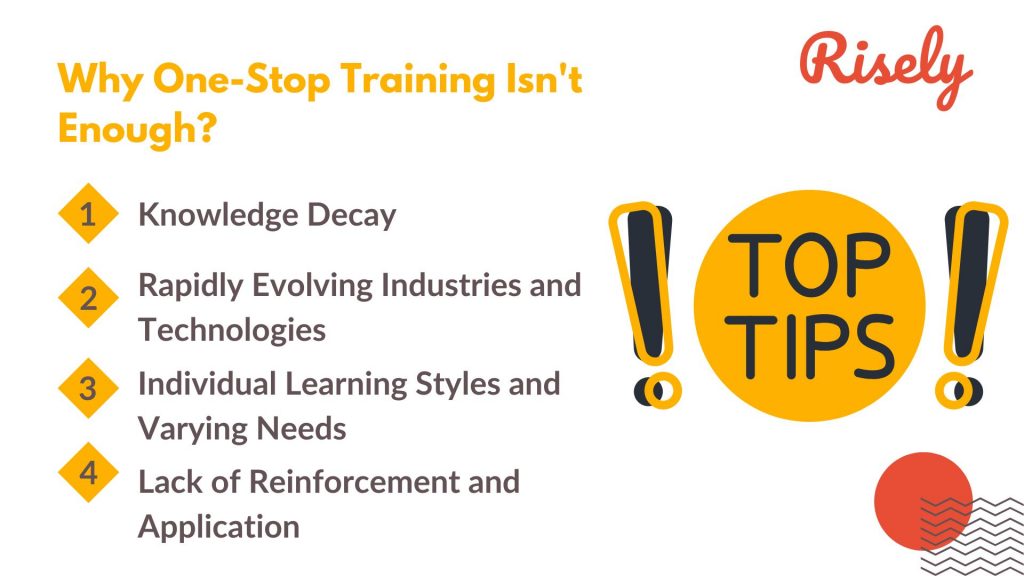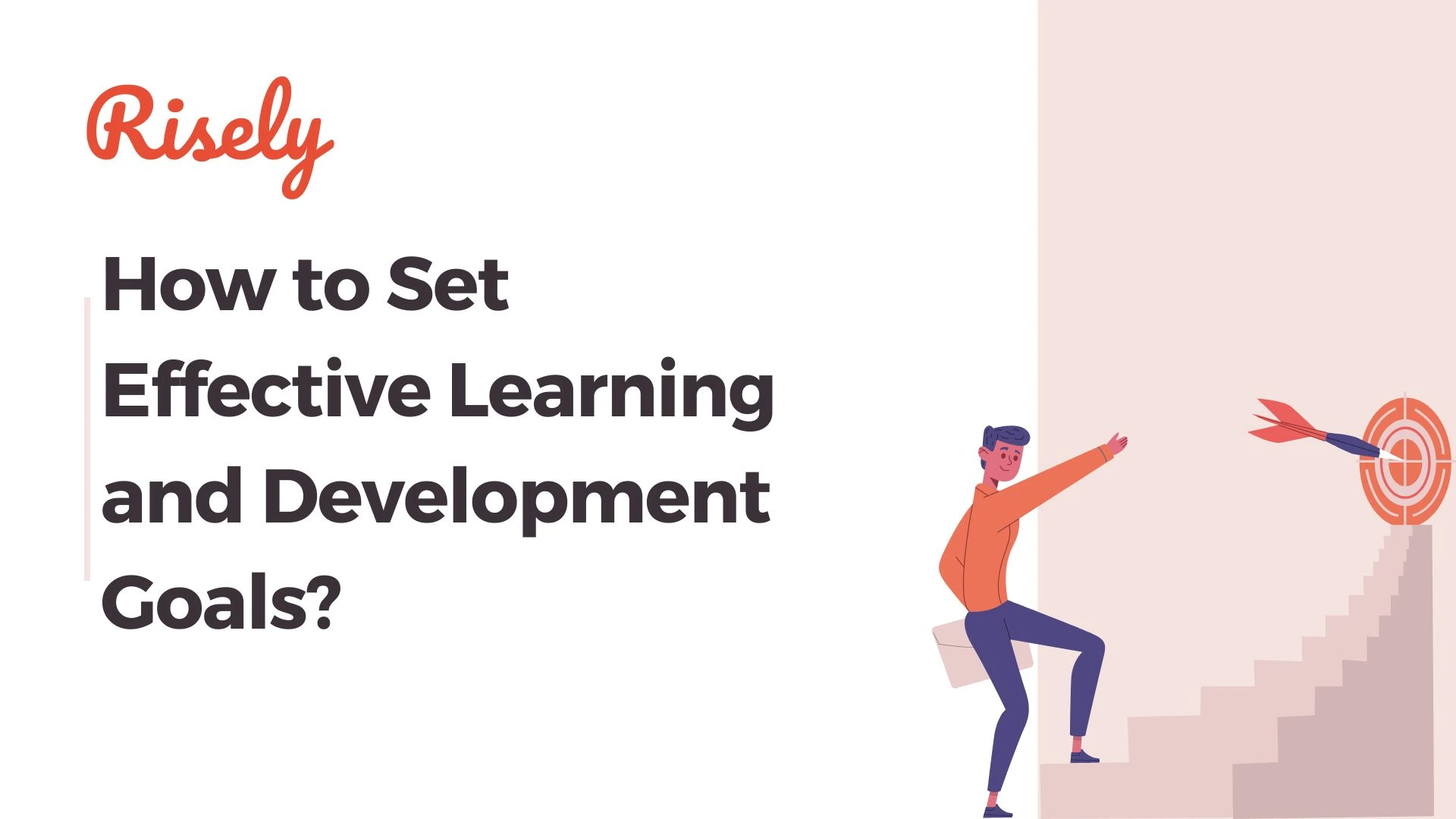Ditch the One-Stop Shop: Why Ongoing Training is Key to Long-Term Success
Did you know that 94% of employees would stay at a company longer if it invested in their career development? In an era where industries evolve rapidly, and job roles transform almost overnight, the need for continuous learning is paramount. While one-stop training programs have their merits, they often fall short in adapting to the ever-changing demands of the modern workplace. Ongoing training, on the other hand, provides a dynamic platform for employees to acquire new skills, stay relevant, and contribute meaningfully to organizational success. Join us as we delve deeper into the manifold benefits of ongoing training and why it’s the cornerstone of a thriving workforce in today’s competitive landscape.What is one-stop training?
One-stop training, or “one-shot learning,” refers to a traditional training method where participants receive all necessary information and skills in a single, intensive session. This approach is often characterized by:- Front-loaded learning: A large amount of information is delivered quickly, expecting participants to retain and apply it all at once.
- Limited flexibility: The training content and pace are often standardized, neglecting individual learning styles and different learning speeds.
- Lack of reinforcement: The training typically lacks ongoing support and practice opportunities, making it difficult for participants to retain knowledge and skills over time.
Why One-Stop Training Isn’t Enough?
While one-stop training might seem convenient and efficient at first glance, it suffers from several limitations:- Knowledge Decay: Studies show that humans naturally forget information over time, especially if they don’t apply it regularly. One-stop training often leads to rapid knowledge decay, rendering the acquired skills useless in the long run.
- Rapidly Evolving Industries and Technologies: Today’s world is characterized by rapid change, particularly in technology-driven industries. Skills acquired through one-stop training may quickly become obsolete, leaving employees unprepared for future challenges.
- Individual Learning Styles and Varying Needs: Every individual learns differently. One-stop training, with its standardized approach, fails to cater to diverse learning styles and individual needs. Some learners might require additional practice, while others might grasp the concepts quickly and benefit from more advanced training.
- Lack of Reinforcement and Application: One-stop training often lacks the crucial reinforcement and practical application element. Without regular practice and application of learned skills, it becomes difficult for participants to internalize and retain the information effectively, significantly reducing the training’s impact.

What is Ongoing Training?
Ongoing training, also known as continuous learning or continuous training, is a strategic approach to employee development that emphasizes consistent learning and skill development over time. Unlike the one-stop approach, it focuses on:- Breaking down complex concepts into smaller, digestible modules.
- Providing diverse learning methods (e.g., microlearning, workshops, mentoring) catering to various learning styles.
- Offering regular opportunities for reinforcement and practice.
- Encouraging continuous improvement and adaptation to evolving needs.
- Retain information and skills more effectively.
- Adapt to changing industry standards and technologies.
- Apply acquired knowledge in real-world scenarios.
Analyzing the Benefits of Ongoing Training Through Adobe’s Example
- Improved Employee Performance and Productivity: Adobe’s “Adobe Digital Learning” program directly addresses this benefit. The program offers microlearning modules, which allow employees to quickly grasp and apply new skills relevant to their everyday tasks. This translates to a more efficient and productive workforce as employees can readily implement what they learn daily. Furthermore, the program’s personalized learning paths ensure that employees receive training tailored to their specific needs and roles, further enhancing their performance and productivity within their areas.
- Increased Employee Satisfaction: By offering a variety of online and offline resources, “Adobe Digital Learning” caters to different learning styles and preferences. This flexibility and diverse learning opportunities demonstrate the company’s investment in employee development, which fosters a sense of value and appreciation among employees. Additionally, access to industry experts through the program provides mentorship and guidance, which can motivate and engage employees, leading to increased satisfaction and commitment to their roles.
- Enhanced Innovation and Problem-Solving Skills: The program’s microlearning modules and personalized learning paths encourage employees to continuously learn and stay updated on the latest trends and technologies in their field. This fosters a culture of continuous learning and exploration, which is crucial for innovation and creative problem-solving. Employees have the knowledge and skills to approach challenges with fresh perspectives and develop innovative solutions.
- Reduced Turnover Rates and Improved Talent Retention: Adobe’s 15% reduction in turnover rate directly correlates to the benefits of ongoing training. Investing in employee development demonstrates a commitment to their growth and career progression, making employees feel valued and engaged. This reduces the likelihood of them seeking opportunities elsewhere, leading to improved talent retention and a more stable workforce.
- Stronger Company Culture and Competitive Advantage: By providing comprehensive training opportunities, Adobe fosters a culture of learning and growth. This culture promotes collaboration, knowledge sharing, and innovation among employees, leading to a stronger and more cohesive team environment. Additionally, a skilled and engaged workforce with the latest knowledge contributes to a competitive advantage in the market. Adobe’s investment in continuous learning positions the company to adapt to industry changes and stay ahead of the competition.
In conclusion, Adobe’s “Adobe Digital Learning” program is a real-world example demonstrating the tangible benefits of ongoing training for employees and the organization. By investing in continuous learning, companies can create a more productive, engaged, and innovative workforce, ultimately gaining a competitive edge in the market.
Grab the free training and development plan template by Risely!
Refocus on core elements for effective training programs with Risely.
How to Build a Continuous Learning Culture: Fostering Growth and Innovation
Building a continuous learning culture is no small feat, but its benefits are invaluable. It requires a strategic approach and consistent effort from both leadership and employees. Here are some key steps to foster a thriving learning environment within your organization:Leadership Buy-in and Commitment is Crucial
Leaders set the tone for the organization. When leaders actively participate in training programs, advocate for learning opportunities, and allocate resources for continuous learning initiatives, it sends a powerful message to employees. This demonstrates commitment and encourages employees to take ownership of their learning journey.Encourage a Growth Mindset and Open Communication
Cultivate a growth mindset where learning is seen as an ongoing process, not a one-time event. Encourage employees to embrace challenges and view mistakes as opportunities for learning and growth. Additionally, it fosters open communication by creating safe spaces for employees to ask questions, share ideas, and provide feedback on training programs.Provide Diverse Learning Opportunities
Cater to various learning styles and preferences by offering diverse learning opportunities. This can include:- Microlearning modules: Short, engaging modules that provide bite-sized learning chunks.
- Workshops: Interactive sessions focused on specific skills or topics.
- Mentorship programs: Pairing experienced employees with less experienced ones for personalized guidance and support.
- Online courses and resources: Providing access to online platforms and resources for self-directed learning.
Utilize Technology for Flexible and Accessible Training
Leverage technology to make training flexible and accessible to all employees. This includes:- E-learning platforms: Offering online courses and resources accessible anytime, anywhere.
- Mobile learning apps: Providing bite-sized learning content accessible on mobile devices.
- Video conferencing tools: Facilitating virtual training sessions for geographically dispersed teams.
Other Interesting Reads
Overcoming Challenges in Continuous Learning
Implementing a continuous learning culture isn’t without its challenges. However, by employing strategic solutions, you can effectively overcome these roadblocks and reap the immense benefits of ongoing training.1. Budgetary Constraints
Budgetary limitations are a common concern. However, continuous learning can be viewed as an investment in human capital, not just a cost. Highlight the return on investment (ROI) of ongoing training by showcasing data demonstrating improved productivity, reduced turnover, and increased innovation. Consider cost-effective solutions such as microlearning modules, online resources, and peer-to-peer learning initiatives.2. Time Management
Time constraints are often cited as a barrier to training. Emphasize using bite-sized learning modules that can be easily integrated into busy schedules. Additionally, focus on training directly applicable to employees’ roles and responsibilities. This ensures that learning is action-oriented and immediately valuable in their daily work, making them more likely to prioritize it.3. Measuring Effectiveness:
Tracking the effectiveness of training programs is crucial. Utilize various metrics such as completion rates, knowledge retention, skill application, and employee satisfaction to measure the impact of training initiatives. Regular employee feedback also provides valuable insights. By demonstrating the tangible benefits of training through data and feedback, you can gain greater buy-in and support for continuous learning programs.4. Keeping Employees Engaged
Maintaining employee engagement is key to the success of ongoing learning. Offer incentives for completing training modules or achieving learning goals. Recognize and celebrate learning achievements to acknowledge individual efforts and foster a culture of continuous improvement. Personalize learning paths to cater to individual needs and interests, keeping employees motivated and engaged in their learning journey. By addressing these challenges and implementing practical solutions, you can ensure that your continuous learning initiatives are sustainable and impactful, leading to a more knowledgeable, adaptable, and successful workforce.Wrapping Up
In conclusion, embracing ongoing training is an additional expense and a strategic investment in your company’s future. By prioritizing continuous learning, you empower your managers and employees with the skills and knowledge needed to thrive in today’s dynamic world. The benefits are far-reaching, and as a manager, you should take the initiative to champion continuous learning in your team. Encourage your employees to embrace their learning journey and equip them with the tools and resources necessary to succeed.Grab the free training and development plan template by Risely!
Refocus on core elements for effective training programs with Risely.
Other Related Blogs
How to Set Effective Learning and Development Goals?
This blog highlights how effective learning and development goals are set, why is setting them important for your organization and what challenges you might face during this process. … Read…
Are you on track to meet your Q1 goals?
Are you on track to meet your Q1 goals? We are in the middle of the first quarter of 2024. Seems hard to believe. It surely is! ⏰ Time has…
5 Secrets Of Solid Goal Setting At Work You Can’t Miss
5 Secrets Of Solid Goal Setting At Work You Can’t Miss “I don’t focus on what I’m up against. I focus on my goals and I try to ignore the…
Understanding the world of Goal Setting Coach to reach new heights
Understanding the world of Goal Setting Coach to reach new heights Setting and achieving goals is essential for personal and organizational success in today’s fast-paced and competitive work environment. However,…


